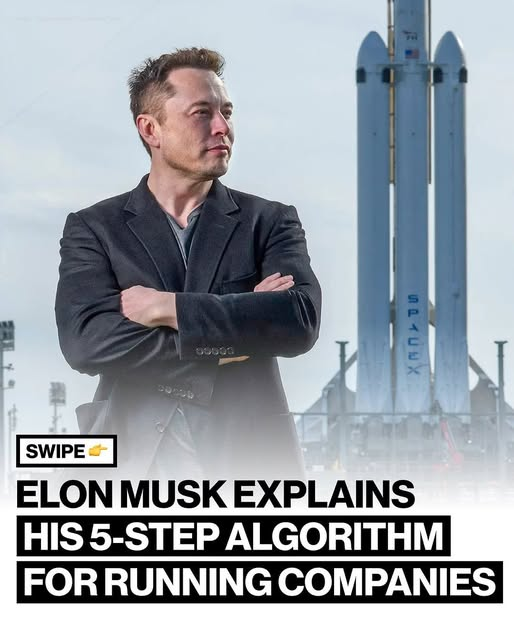
Elon Musk, known for his innovative leadership at Tesla, SpaceX, and other ventures, has outlined a five-step algorithm that he follows to optimize efficiency and drive success in his companies. His approach challenges traditional business processes and emphasizes critical thinking, simplification, and automation.
1. Question Every Requirement
Musk stresses the importance of challenging every rule and requirement within a company. He argues that each requirement must be traced back to an individual, rather than a department, ensuring accountability. Even if a rule comes from an expert, it should still be questioned, as smart people’s ideas often go unchallenged, leading to inefficiencies.
2. Delete Any Unnecessary Processes
Musk advises eliminating parts, steps, or processes that do not add value. He believes that many businesses hold on to outdated procedures out of habit. If at least 10% of the deleted processes are not later reintroduced, then not enough was removed.
3. Simplify and Optimize
Once unnecessary parts or processes are removed, only then should simplification and optimization take place. Musk warns against the common mistake of optimizing systems that should not exist in the first place.
4. Accelerate Cycle Time
Speeding up production or workflow is crucial, but Musk emphasizes that this should only be done after following the previous three steps. He admitted that in Tesla’s early days, he spent too much time optimizing speed before simplifying operations, which led to unnecessary complications.
5. Automate Last
Contrary to popular belief, Musk prioritizes automation last. He believes that companies often jump to automation too quickly, which can lead to inefficiencies if the processes themselves are flawed. He cites mistakes made in Tesla’s Nevada and Fremont factories, where automation was implemented before removing inefficiencies.
Conclusion
Musk’s five-step algorithm is a blueprint for efficiency and innovation. By questioning requirements, eliminating unnecessary processes, simplifying operations, accelerating cycle time, and automating last, he ensures that his companies remain agile, efficient, and ahead of the competition. Entrepreneurs and business leaders can apply these principles to cut inefficiencies, boost productivity, and drive innovation in their own organizations.


